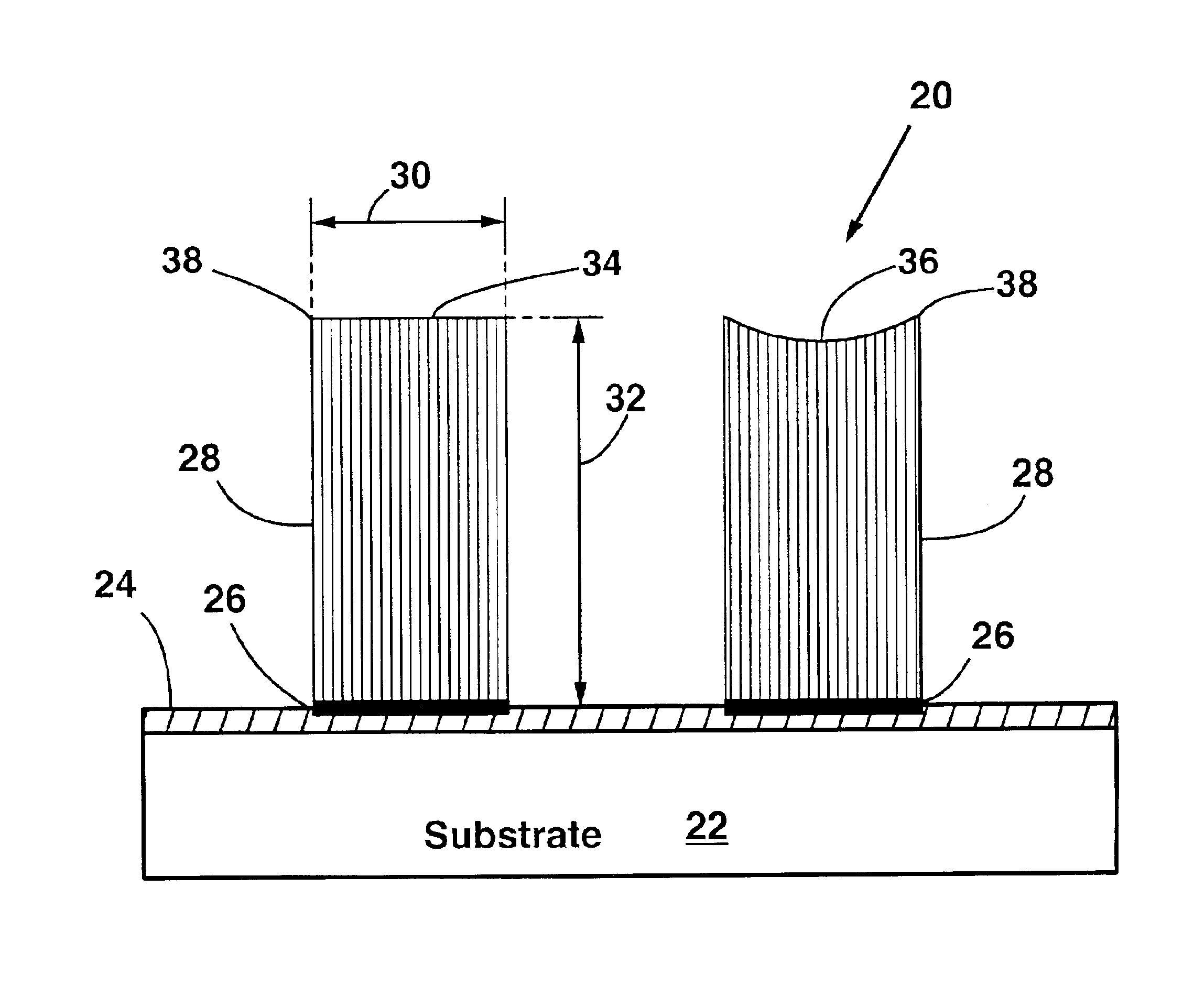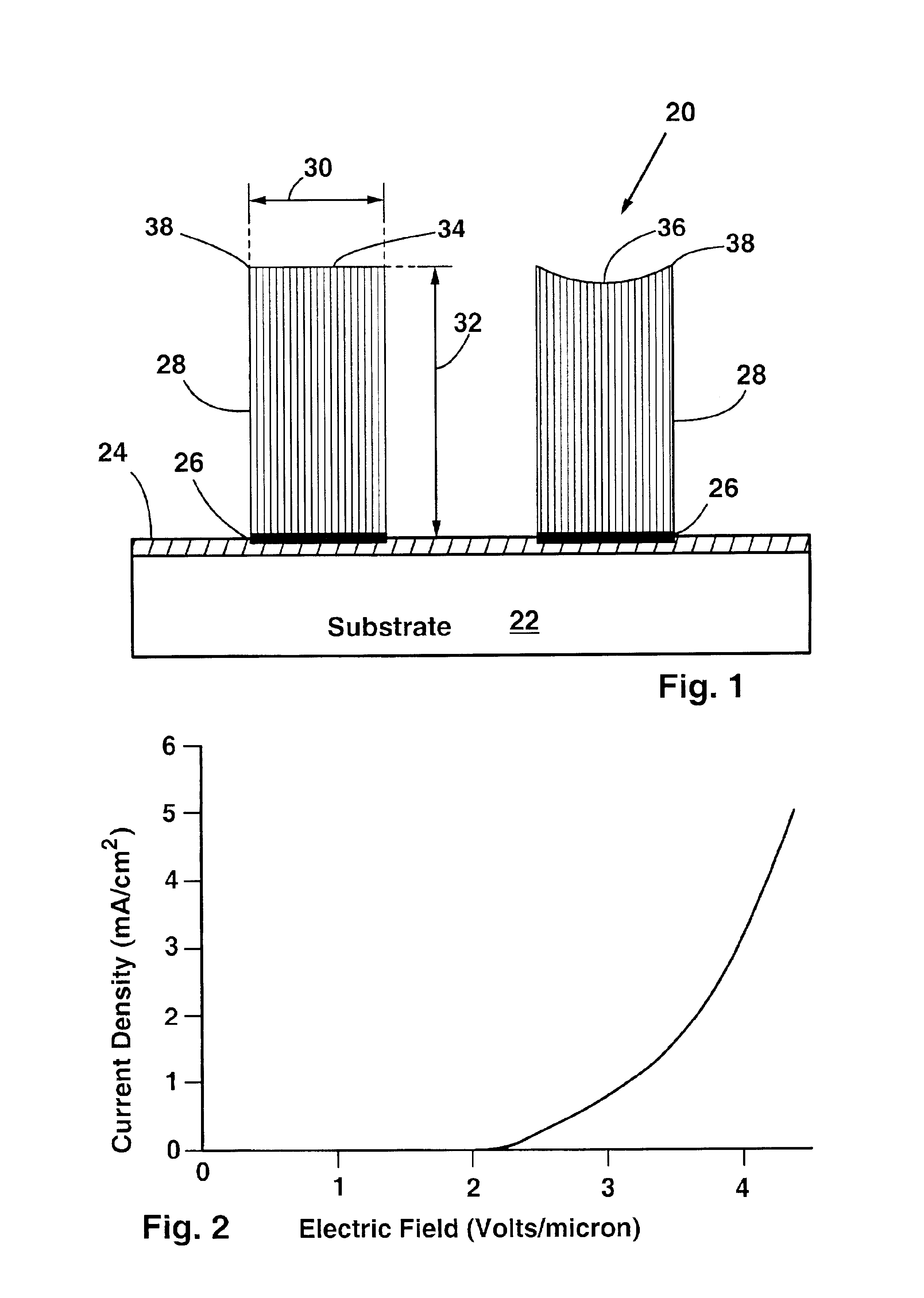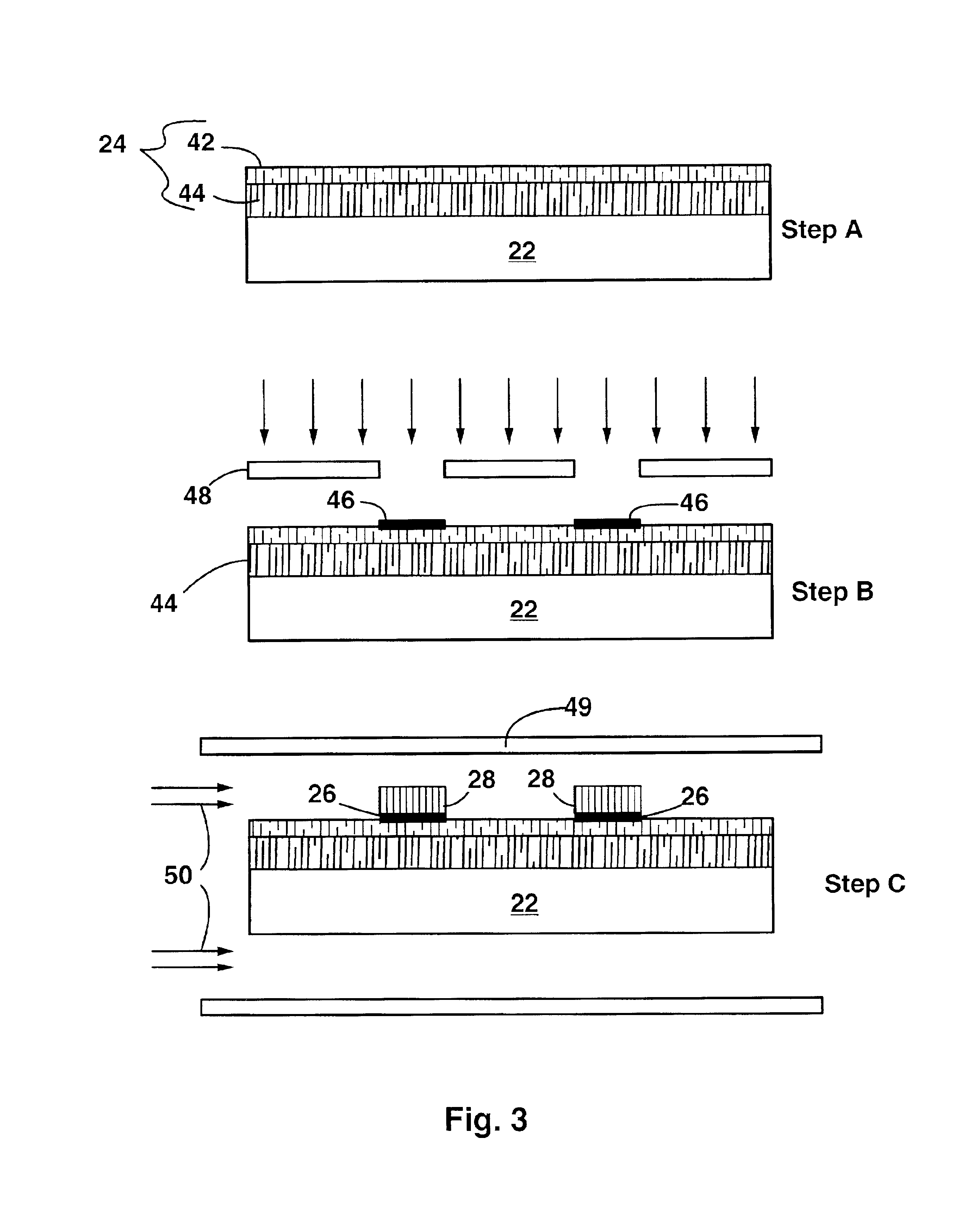Self-oriented bundles of carbon nanotubes and method of making same
a carbon nanotube and self-oriented technology, applied in the manufacture of electrode systems, electric discharge tubes/lamps, metal/metal-oxide/metal-hydroxide catalysts, etc., can solve the problems of difficult bulk work, impossibly tangled mess resembling a hairball, and the lik
- Summary
- Abstract
- Description
- Claims
- Application Information
AI Technical Summary
Benefits of technology
Problems solved by technology
Method used
Image
Examples
Embodiment Construction
[0035]The present invention is believed to be applicable to a variety of different types of devices, and the invention has been found to be particularly suited for field emission devices and other devices employing carbon nanotubes. While the present invention is not necessarily limited to such applications, various aspects of the invention may be appreciated through a discussion of various examples using this context.
[0036]FIG. 1 shows a field emission device 20 according to an example embodiment of the present invention. The device has a substrate 22 with a porous top layer 24. The substrate 22 and top layer 24 are made of silicon, although other substrate materials can also be used. Disposed on the porous top layer 24 are patterns of catalyst material 26. In one instance, the catalyst material 26 is a thin film of iron oxide. Extending from the catalyst material patterns 26 are carbon nanotube bundles 28, which are perpendicular to the substrate 22. The carbon nanotubes comprisin...
PUM
| Property | Measurement | Unit |
|---|---|---|
| Diameter | aaaaa | aaaaa |
| Temperature | aaaaa | aaaaa |
Abstract
Description
Claims
Application Information
 Login to View More
Login to View More - R&D
- Intellectual Property
- Life Sciences
- Materials
- Tech Scout
- Unparalleled Data Quality
- Higher Quality Content
- 60% Fewer Hallucinations
Browse by: Latest US Patents, China's latest patents, Technical Efficacy Thesaurus, Application Domain, Technology Topic, Popular Technical Reports.
© 2025 PatSnap. All rights reserved.Legal|Privacy policy|Modern Slavery Act Transparency Statement|Sitemap|About US| Contact US: help@patsnap.com



